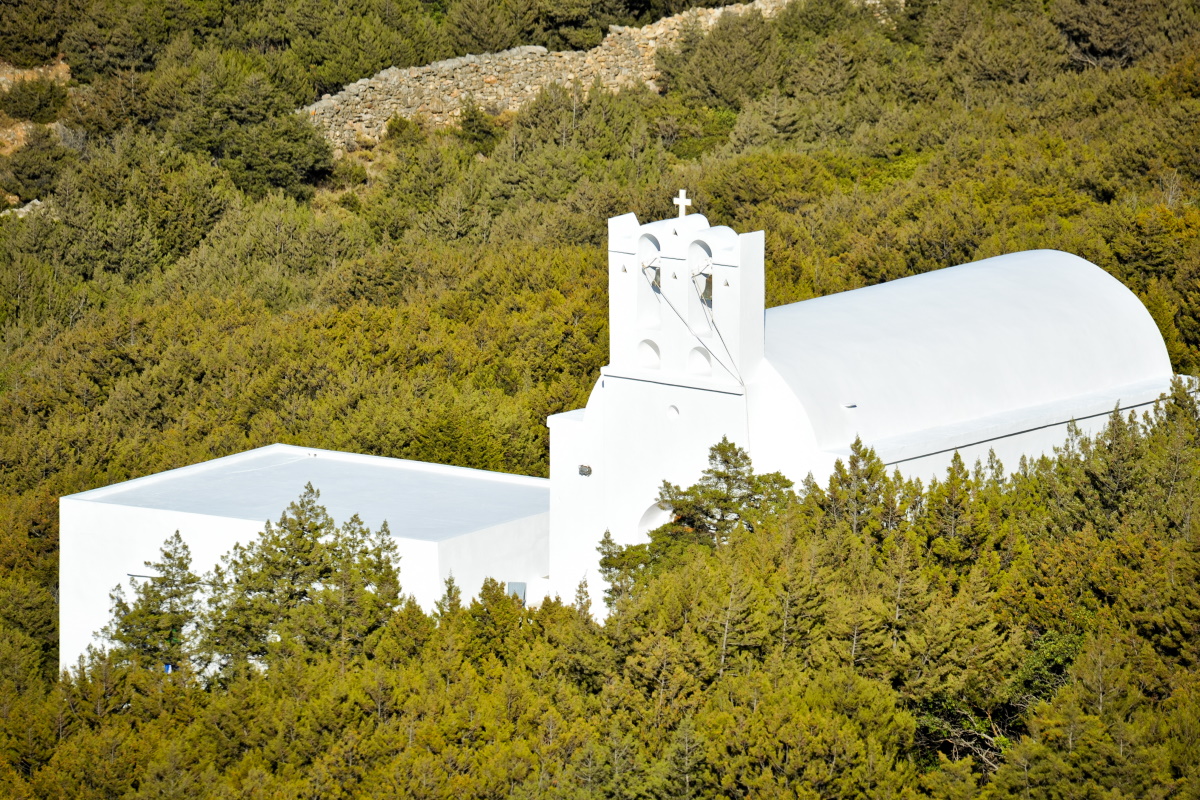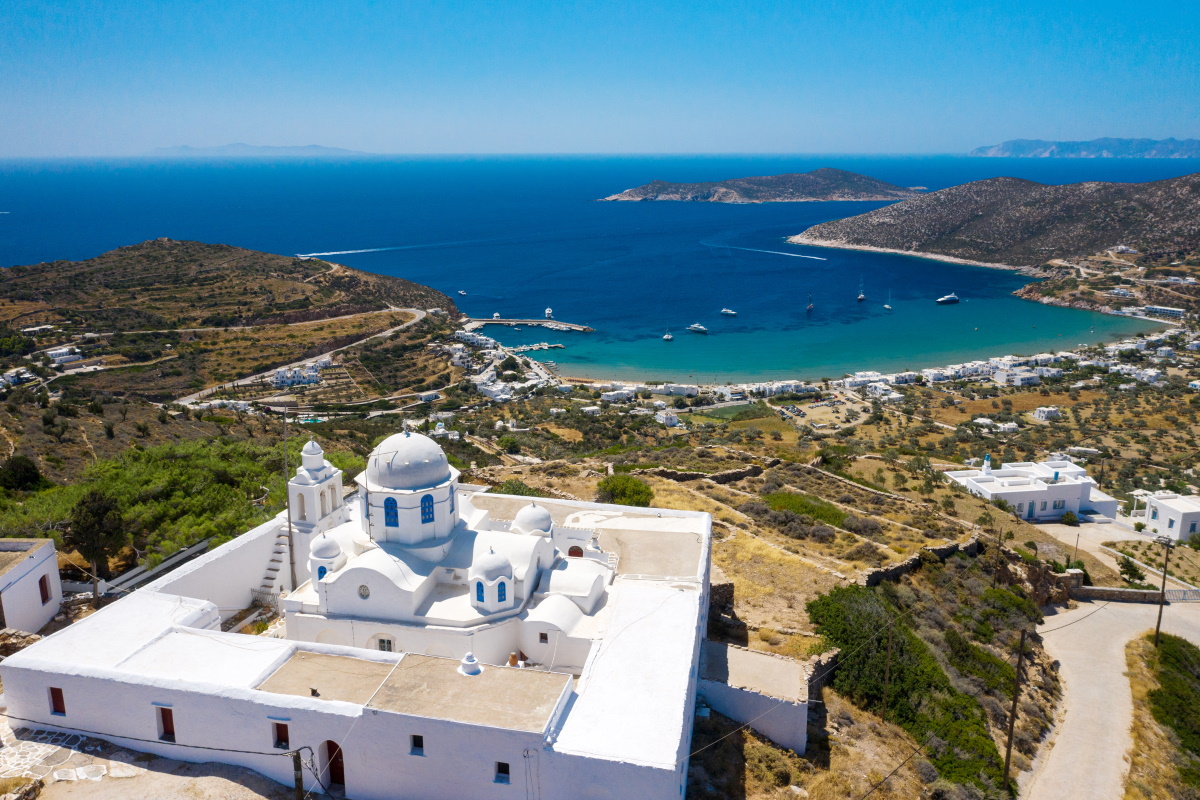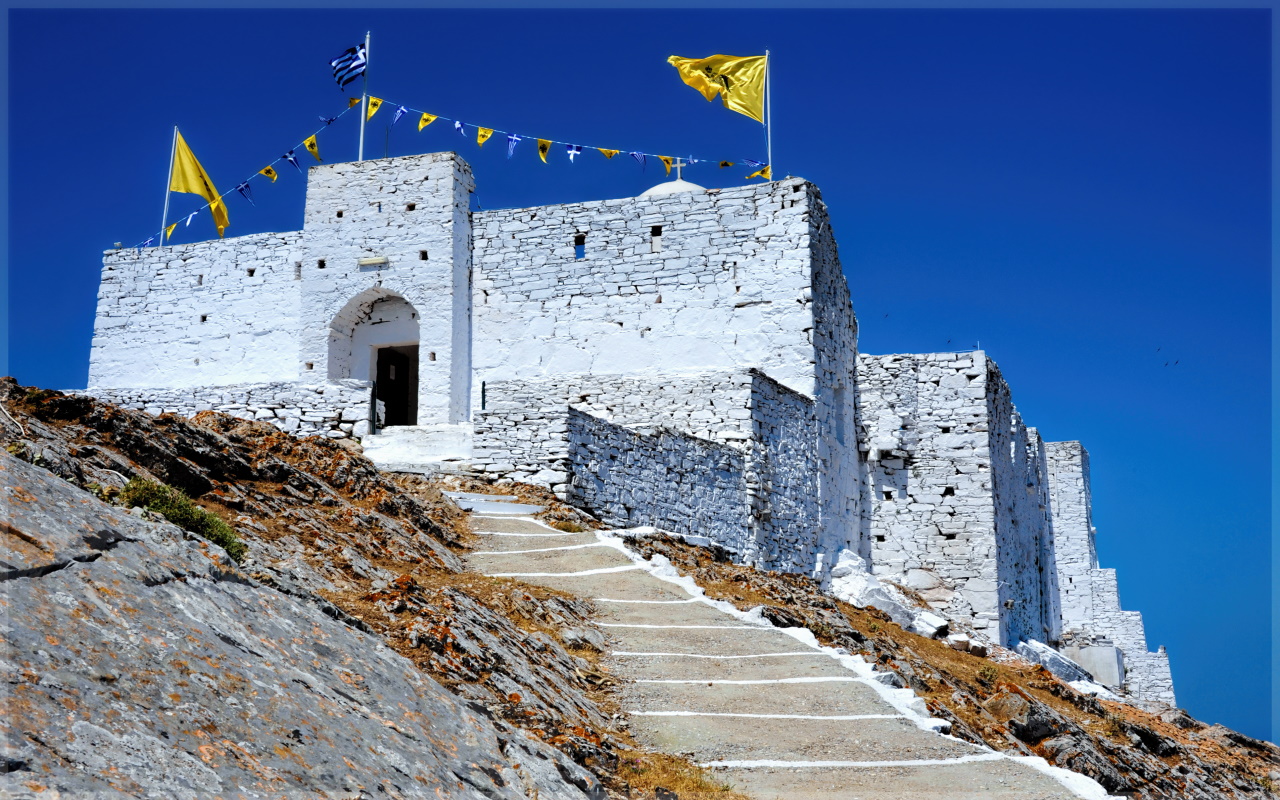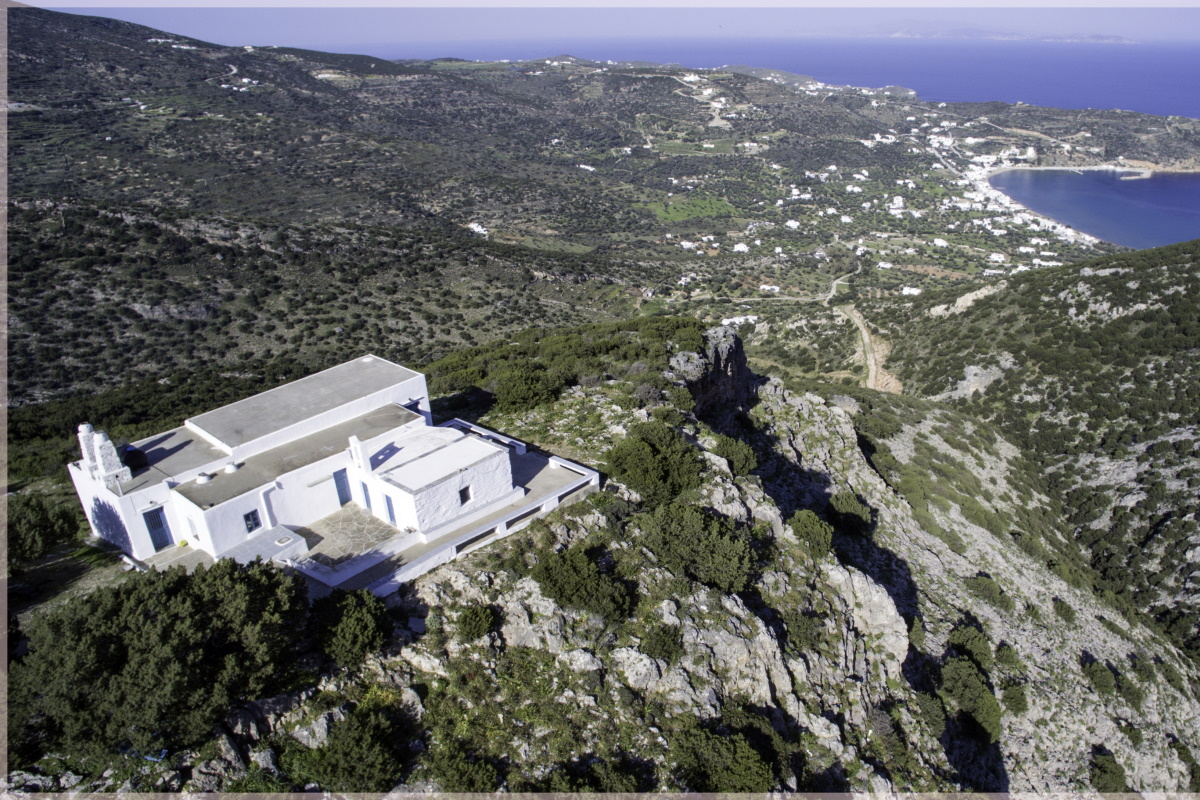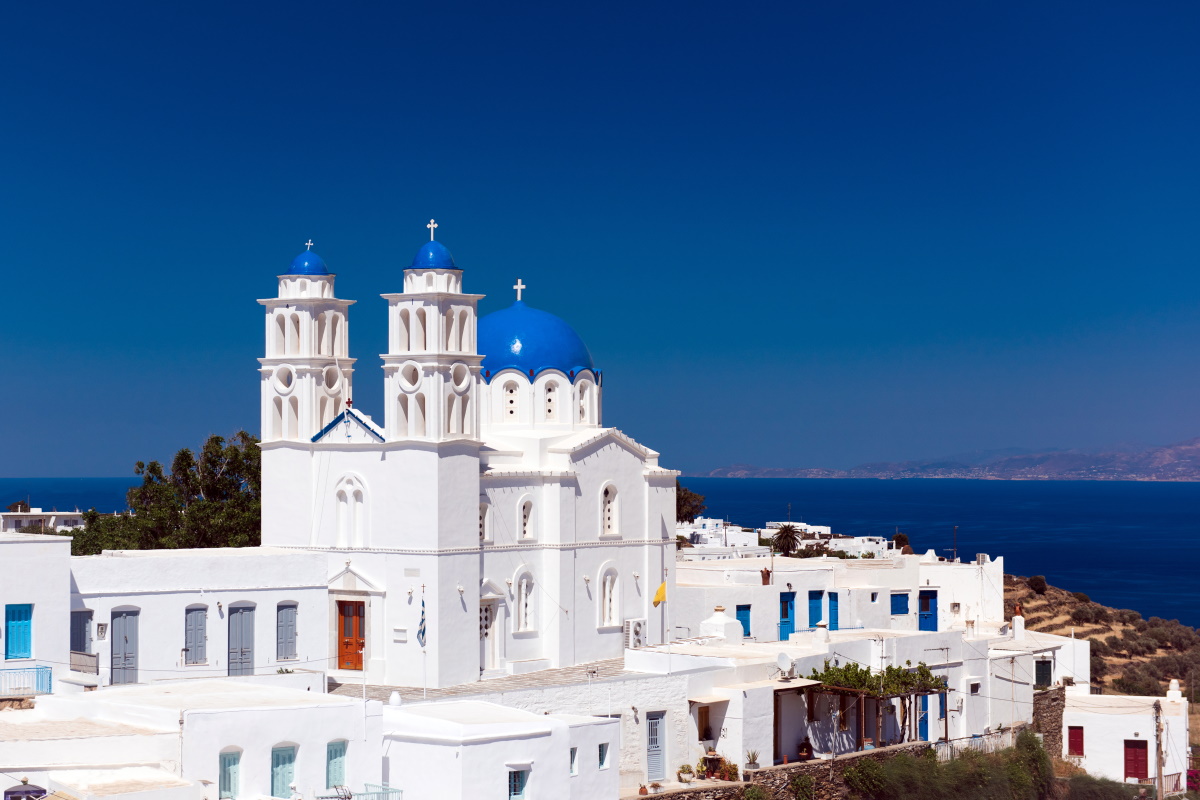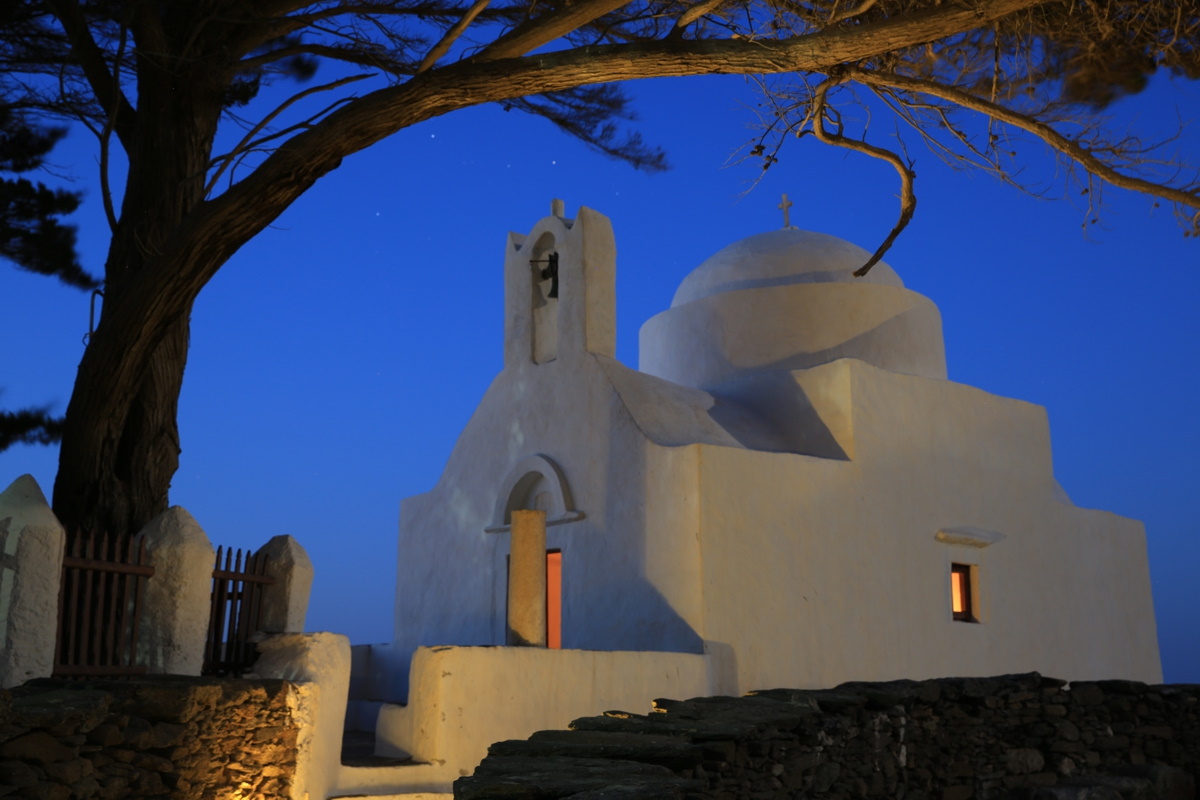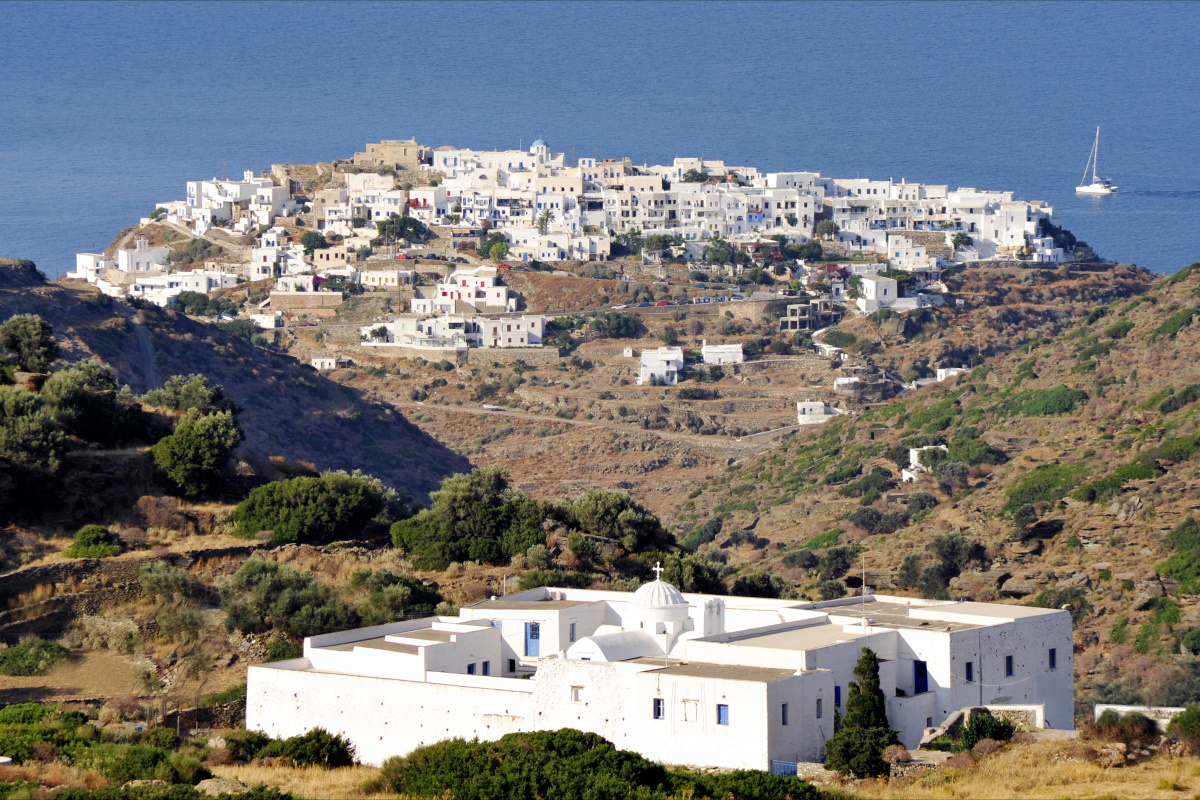Churches - Monasteries
The history, architectural traditions, and the religious and social life of the island are inextricably connected to the numerous churches and monasteries.
Historically, the Sifnians benefited from the privileges granted to them by the Turkish sultans in relation to the free expression of their Christian faith. Thus the Archdiocese of Sifnos was established in 1646, which included, in addition to Sifnos itself, the islands of Amorgos, Anafi, Astypalea, Folegandros, Ios, Mykonos, Serifos, Sikinos and Folegandros.
Later, Sifnians would bequeath their property to churches or monasteries and assume various obligations associated with the celebration of customary rituals (especially the annual festivals).
The number of churches and monasteries on the island is testament to the strength of religious tradition among the Sifnian people. This number (237 in all) is greater than any other island in the Cyclades, in proportion to the total area of the island.
Many of the churches and monasteries of the island have been declared historical monuments and are of enormous religious and architectural interest. Church committees and ‘fraternities’ take care of the maintenance of even those churches without road access with admirable zeal and a substantial amount of volunteer work.
There are 8 parish churches in Sifnos: Agios Spyridon in Apollonia, which is also the Metropolitan Cathedral of the island, Panagia Kochi in Artemonas, the Taxiarches (of the Archangels) in Agios Loukas, Agios Ioannis Prodromos (John the Baptist) in Pano Petali, Zoodochos Pigi (Life-Giving Spring) in Kato Petali, Panagia Eleousa (Virgin Mary the Merciful) in Kastro, Agios Nikolaos in Exambela, and Agios Giorgios in Katavati.
Although there are no working monasteries on the island nowadays, they still have special historical and religious importance.
The Monastery of Vryssiani in Exambela, the largest on the island, was built in the 17th century and is dedicated to the Birth of the Virgin Mother. It houses the Museum of Ecclesiastical Art and the exhibits include old printed editions, a New Testament from 1796, the Patriarchal Sigil granting privileges to the monastery, reliquaries, ceremonial ‘exapteryga’ (metal disks depicting the cherubim), ceremonial chalices, vestments, icons, a priest’s ‘feloni’ (ceremonial cape), exceptional works of art, among other things.
The Monastery of Profitis Elias Apsilou is situated on top of the highest mountain of the island (at an altitude of about 700 meters), which was built on the site of an ancient acropolis. To the right of the monastery is the small chapel of Agios Elisaiou (Saint Elisha).
The Monastery of Chrysostomos in Kato Petali is an historical important Sifnian monastery to the east of the village, where the first Greek school on the island opened its doors, probably in around 1650. The monastery housed the famous School of the Holy Sepulchre from 1835 onwards.
The Monastery of Panagia tou Vounou (Our Lady of the Mountain) involves taking a short detour to the right on the road from Apollonia to Platy Gialos. It is especially beautiful architectural speaking, and there are spectacular views over the village and the beach of Platy Gialos, and of the island of Kitriani opposite. The church has three separate altars and is variously dedicated to the Eisodion tis Theotokou (the Presentation of the Virgin Mary), the saints Konstatinos and Eleni, and to Agios Nikolaos. It was built in the early 19th century.
The Monastery of Panagia Fyrogia (16th century) is situated on the road to Vathi, at the junction with the Apollonia ring road. Its name probably derives from the red soil in the region. In former years the monks of St. Nigia of Apsilou lived here during the winter months. The monastery was restored in the 1970s by the Hellenic Society for the Protection of the Environment and Cultural Heritage, and the restoration was awarded the Europa Nostra cultural heritage preservation prize.
Perhaps the most imposing church is Panagia Chrysopigi (Holy Virgin Mary The Golden Spring), the patron saint of the island, the history of which is closely connected to a series of religious traditions and myths. It is an important pilgrimage site, not only for the people of Sifnos but for all Orthodox Greeks. There is also the church of Panagia Poulati, a private church built in 1870, on the eastern side of the island, below Artemonas; the Church of the Eptamartyres (the Seven Witnesses) built right on the sea below the Kastro hill; the church of Stavros (the Cross) in the village of the same name near Faros; and Ai Sostis in the vicinity of the island’s old silver mines, one of the oldest in the world.
There are many other churches to visit in the villages of Sifnos:
In Exambela: There is the church of ‘Old Man’ Ai Nikolaos, where the poet Aristomenis Proveleggios is buried; as well as the churches of Agios Athanasios, Agios Dimitrios, Agios Georgios, Agia Kyriaki, the Church of Christ, Agia Varvara, and a church dedicated to the Panagia (Our Lady, the Virgin Mary), while scattered around the outskirts of the village are the churches of Agios Stylianos, Panagia Straopodi, Ai Yiannis at Korakies, Agia Fotini, Ai Giorgi tou Masticha, Agios Tryphonas, Agia Anna.
In Katavati: Panagia Aggeloktisti (Virgin Mary, Built by Angels) a three-aisled church with a conical dome and fresco paintings of the saints. Tradition has it that the church was built and run by angels. Next to it is the chapel of Agios Eleftherios. Other churches in Katavati are Evaggelistria (the Annunciation), Agio Saranta, Ai Giorgakis, ‘tou Christou’ (Holy Church of Christ), of Ai Giorgi T 'Apelaiti, Prophitis Elias ‘tou Hamilou’ (the Humble), Ai Yannis tou Elemona (John the Merciful).
In Apollonia: Panagia Ouranofora (Geraniofora) (of the Skies), the Churches of the ‘Sotiras’ (the Saviour), ‘tou Stavrou’ (the Holy Cross), ‘tou Taxiarchi’ (the Archangel), Agios Athanasios, ‘tou Christou’ (the Church of Christ), Agios Sozontas (the Saved), Agios Antonis, Agios Nikolaos (‘sthn Pigi’, the Source), Panagia tou Barou, and in the broader vicinity of Apollonia: Agia Varvara, ‘Agioi Apostolon’ (the Holy Apostles), ‘tou Rodou tou Amarantou’ (the Eternal Rose), ‘Agia Triada’ (the Holy Trinity), Agios Artemios (which housed the first peer teaching school, and the first school of free Sifnos, after the revolution), and the old convent of Agios Ioannis the Theologian (at Mongou).
Artemona: Panagia tis Ammou (Our Lady of the Sands), Panagia Bali, Ai Petros, Agios Spyridon and Agia Anna.
Agios Loukas: Agios Konstantinos, Ai Loukas, Ai Giorgis t’Afenti, Panagia Gournia, which takes its name from the stone basins by the river where women washed clothes. In the church dedicated to both the Panagia (Our Lady) and Agios Nikolaos there are frescoes painted by the monk Agapios of Sifnos, the Defterevon, the outstanding fresco being a depiction of the circle of life.
In Pano Petali: the churches of Ai Ioannis the Theologian (Theologaki), Agios Tryphonas, Agia Paraskevi, Agios Giorgios of Patsanas and Ai Antipas (a dependency of Mount Athos, where the first preparatory school of Sifnos was founded by Nikolaos Chrysogelos) during the revolution.
In Kastro: the churches of Theoskepasti, Agios Nikolaos, Agia Aikaterini, Koimisis tou Theotokou (the Assumption of the Holy Mother), Agios Ioannis Prodromou (Saint John the Baptist), Agios Ioannis tou Theologou (the Theologian), Taxiarchon (the Archangels), Ai Giorgi tou Gialou (or Seralias) and others. There are a large number of churches here in Kastro, twenty-two churches within in the village alone. This fact is celebrated by its local name ‘Ton Pollon Ecclesion’ (Place of Many Churches). Right of the entrance to the village are the two churches of Agios Stephanos and Agios Ioannis tou Kalyviti, which housed the famous School of the Holy Sepulchre (Panagia Tafou), also known as the ‘Paideftirion of the Archipelago’ from 1687 to 1835.
In Kato Petali: the churches of Ai Nikita, Ai Sostis, Agios Georgios, Agia Paraskevi, Panagia ta Skalakia (Our Lady of the Stairs). On the southern outskirts of the village is the picturesque church of Panagia tou Koukia (also known as the Myrtidiotissa (Our Lady of the Myrtle Tree) 1614).
Some of the churches worth visiting, not only for religious reasons, but also to appreciate the sights of the ever-changing landscape of Sifnos, include the following: The church of Agios Simeon and Ai Nigia of Troulaki that tower over the bay of Kamares; the church of Agios Andreas standing on the hill of the ancient acropolis; Agios Nikitas in Selladi, the twin church of Agiou Polycarpou in the picturesque bay of Herronisos, the two-aisled church of the Archangels in Vathi; Agioi Anargyroi in Agia Marina, Kamares. On the road to Apollonia, there is the church of Panagia Toso Nero (Virgin Mary of the Waters); the church of Panagia Kitriani on the island of Kitriani opposite Platy Gialos (dating from the late 10th or 11th century); the chapel of Agios Charalambos on the footpath connecting Glyfo to Chrysopigi; Agia Sophia and Agios Georgios Karavostastis at Platy Gialos.
Lastly, taking a walk through the designated ‘Natura’ area to visit a few churches of unique beauty and simplicity is very much recommended. There is the old Monastery of the Taxiarchi tis Skafis, the chapel of Agios Stathis, the church of Agia Marina and Agios Konstantinos at Flambouro; Panagia tou Niliou; Ai Yiannis at Mavro Chorio; Ai Nikolaos T 'Aerina, Agia Aikaterini Kapfari, and Agios Polycarpos at Kalamitsi.



